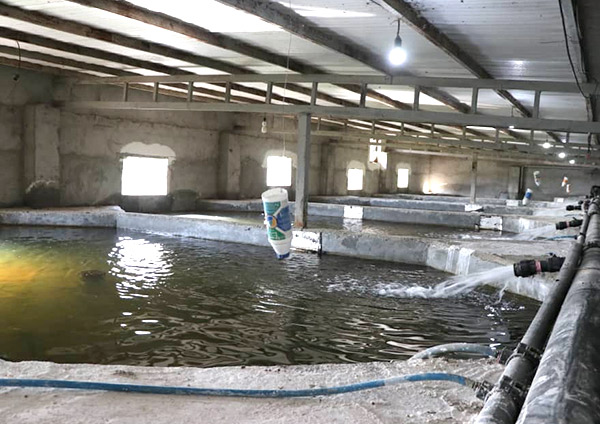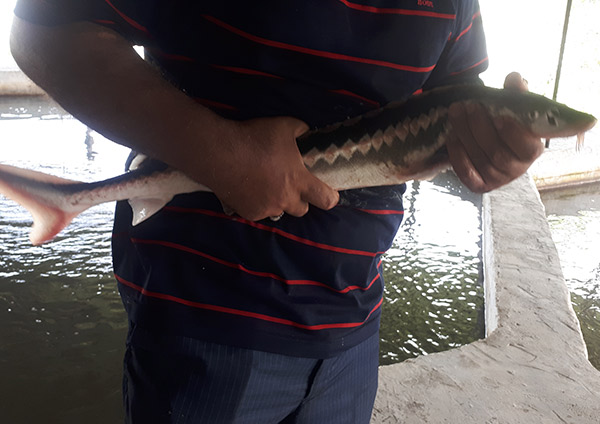caviar-fish, fish, products
(Qarah-burun Sturgeon (Persian Sturgeon
The main origin of this sturgeon is in the coastal waters of the Caspian Sea by the name scientifically called Acipenser persicus and for this reason it is famous by the name of Persian sturgeon which means black muzzle.
In terms of nutritional and economic value it is undoubtedly second in the world and compared to other types of sturgeon has a longer life. Its body is slender and lighter in color compared to the Russian sturgeon. Its bony plates (scutes) are shorter than the Russian sturgeon and its head length in relation to its body length is more compact than the Russian sturgeon (Chalbaash).
Qarah-burun is anadromous, meaning it migrates from the Caspian salt water to freshwater for spawning. This species considers living in warmer waters superior and although found throughout the Caspian Sea, its main stock is in Iranian waters and mainly in the cold seasons in the southern and southeastern parts of the Caspian Sea. Its main food is molluscs, crustaceans, polychaetes, gobies and some other aquatic species on the bottom of the sea.
The average weight of males in the wild is 23 to 24 kg, and females 33.5 kg and the average length of males is 156 cm and females 175 cm for fish reported migrating to the Kura River.
The mean weight and length of females and males were 27.7 and 19.4 kg, 152.3 and 138.9 cm. Respectively according to Iranian Fisheries during 1998. The Persian sturgeon has also been caught weighing 86 kg in Iran.
The male A. persicus (Qarah-buruns) mature at 8 to 10 years of age and the females at 10 to 2 years of age in the sea. The average caviar for each female was reported to be 5.22 kg and a maximum of 12.2 kg.
In environments with proper temperature and nutrition, females mature at age of 7 to 9 and weighing 14 to 22 kg. The approximate length of farmed Persian sturgeon is about 130 cm in maturity and its egg laying is 12 to 15% of the body weight of the fish.
Certain causes, including overfishing contamination of water and the creation of dams that prevent fish from migrating to the rivers for spawning and other problems have caused the fish to be on the red list of endangered species in recent decades by the World Conservation Organization (IUCN). Previously, cultivation and breeding of this valuable species was included in the Fisheries program in 1972 in order to prevent decrease in its stock and also for commercial purposes. At present its relative abundance is greater than of other species.

The sensitivity of Persian sturgeon (qarah-burun) breeding is very high and with some particular difficulties and in this respect is not comparable to beluga`s breeding. Beluga breeding is much easier and less worrying.
Given that this fish is a peculiar species of Iran and in fact is the Iranian sturgeon and its reproduction and growth are faced with special difficulties and complexities, sturgeon breeders in Iran as much as possible should practice and follow the principles of breeding and reproduction with knowledge, constant work and care and pay more attention to breeding and production of this type of species so that its abundance is more realized in sturgeon farms so that the asetra caviar will secure a high degree of export of Iranian caviar.
Lazir Agricultural and Industrial Complex, by dedicating a part of its collection of fish ponds to this valuable Iranian sturgeon, and while producing and breeding it at the same time preventing its extinction and illegal trafficking.
It has also tried to create the conditions for direct delivery of the best and highest quality of qarah-burun’s (asetra’s) meat and caviar to Iranian citizens as well as export of these products for bringing in foreign exchange.




